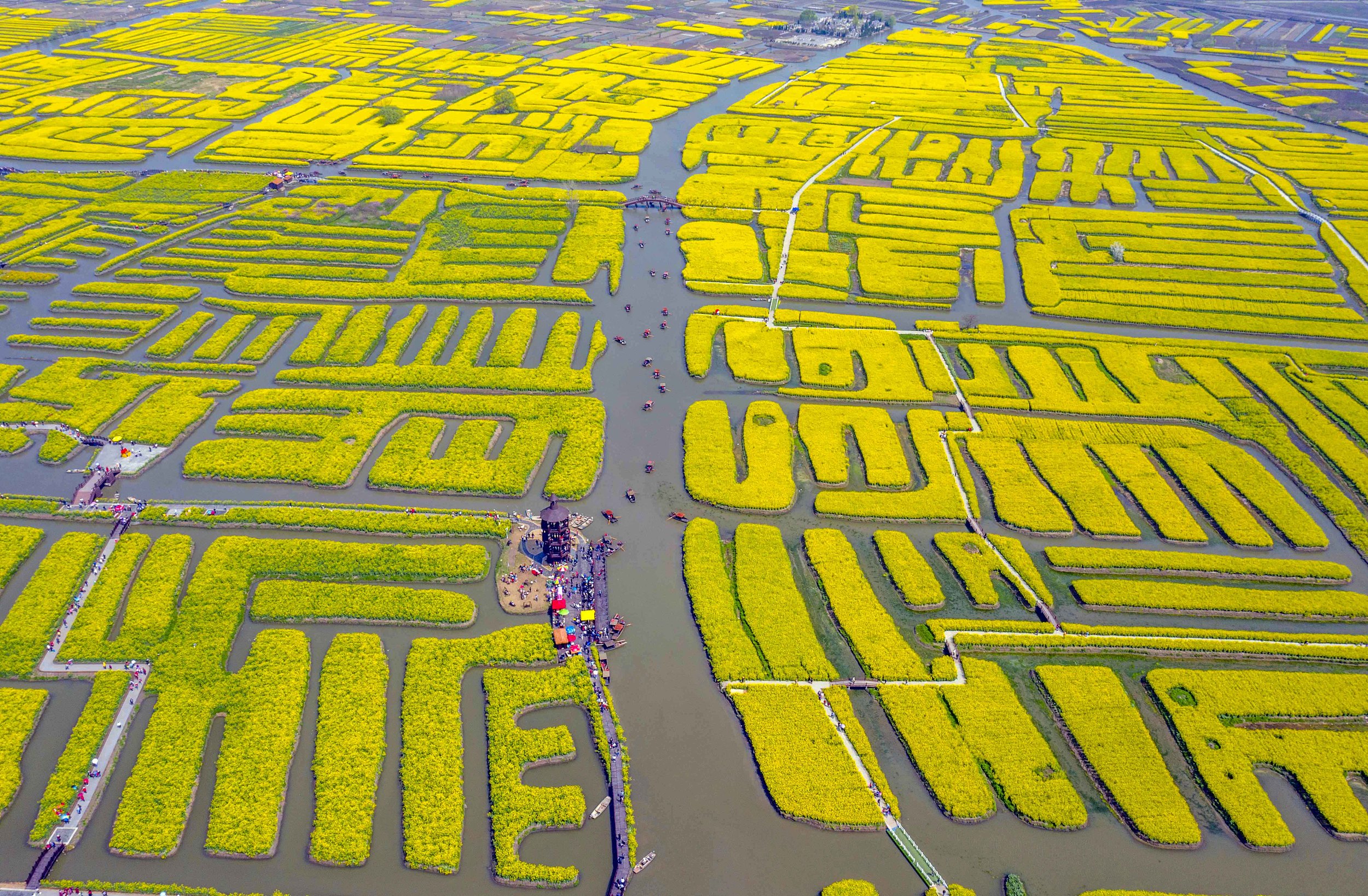Ancient Man-made Islands Support Agriculture: Xinghua Duotian

A bird view of Xinghua Duotian Irrigation and Drainage System in Xinghua city, east China's Jiangsu province. (PHOTO: VCG)
By?BI?Weizi
A world-class marvel is famous for its unique use of water and soil in low-lying areas through dikes, channels and sluices. That is the claim to fame of Xinghua Duotian Irrigation and Drainage System in Xinghua city, east China's Jiangsu province. Built during the Tang Dynasty (618-907), the water system is incredibly still contributing to local irrigation and drainage, flood control, green agriculture and tourism.
Located in low-lying land and traversed by many lakes, Xinghua has been prone to floods throughout its history. To fight against floods, the creative ancestors of locals built wooden structures to support their fields and piled the mud into small stacks, thus creating Duotian.These wild wetlands were transformed into cultivable land. As a special method of land cultivation, Duotian is a perfect example of Chinese people practicing the concept of "humans as an integral part of nature" to achieve balanced agricultural and ecological development. Due to Duotian's unique topographic features, modern farming methods there are almost impossible. Boats are necessary for farming activities. Even today, people still adopt traditional farming methods in this area and use natural and ecological fertilizer to grow crops, especially vegetables.
As the most important living fossil in the Lixiahe River area and a precious resource for studying the changes in local ecology and land use patterns, Xinghua Duotian Irrigation and Drainage System offers useful principles for utilizing water sources and benefiting farming from which today's agricultural industry can learn.







